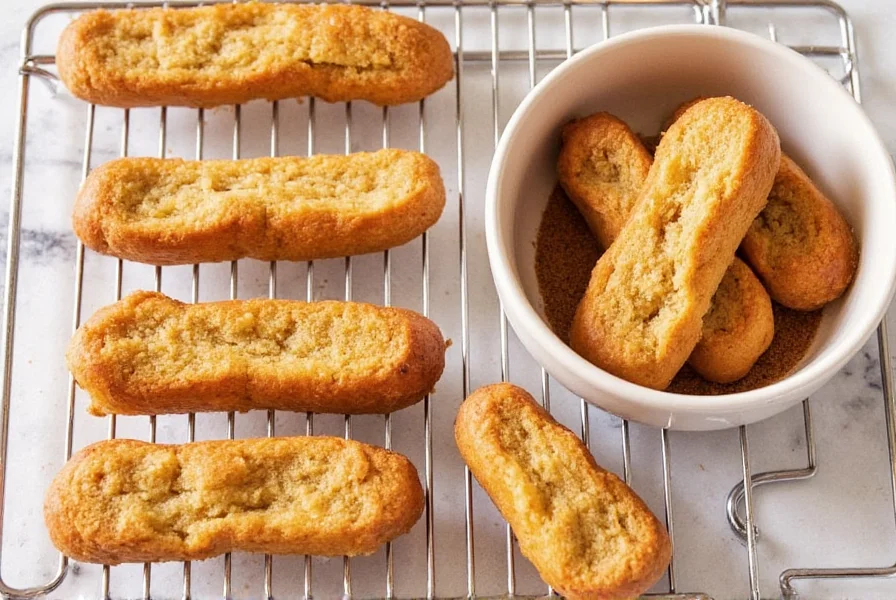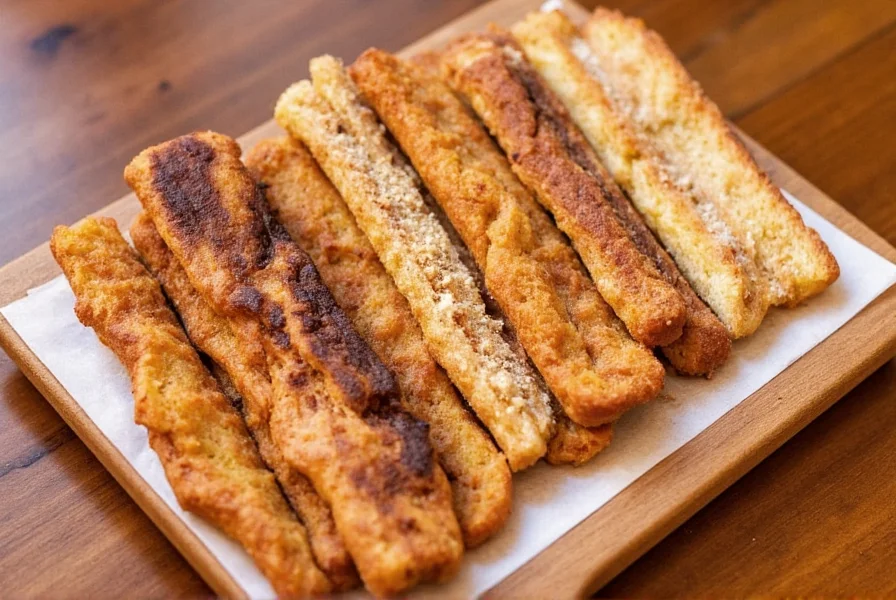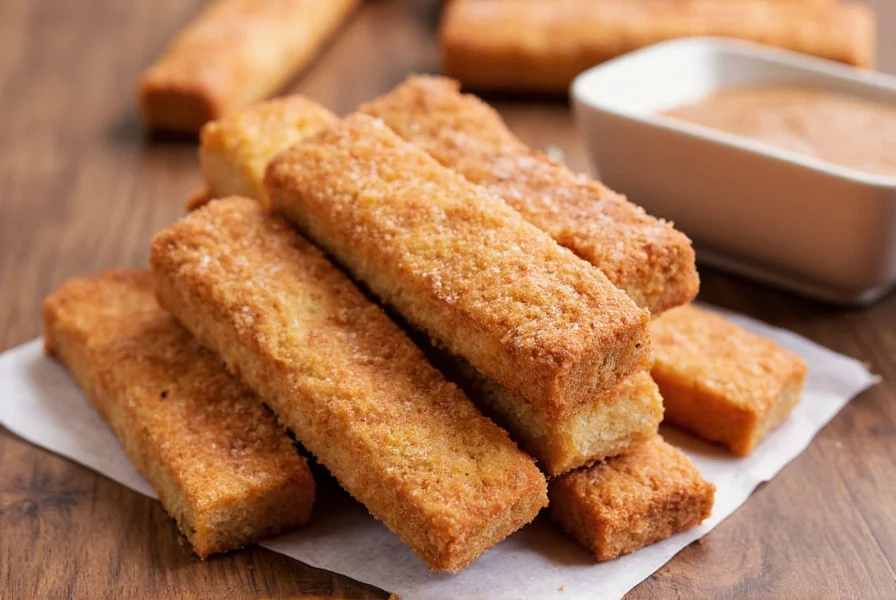Cinnamon toast sticks have become a beloved snack for their perfect combination of crispy texture and warm spice. Unlike commercial versions that often contain preservatives and excessive sugar, making them at home allows complete control over ingredients while delivering superior flavor and texture. This guide provides a foolproof method that consistently produces golden, crunchy sticks with just the right amount of cinnamon sweetness.
The Essential Cinnamon Toast Sticks Recipe
Creating perfect cinnamon toast sticks requires attention to ingredient ratios and baking technique. The following recipe yields approximately 24 sticks and takes just 20 minutes from start to finish.
| Ingredient | Measurement | Key Purpose |
|---|---|---|
| Day-old baguette | 1 medium loaf | Provides ideal dry texture that crisps perfectly |
| Unsalted butter | 2 tablespoons, melted | Creates crisp exterior without sogginess |
| Granulated sugar | 3 tablespoons | Balances sweetness without overpowering |
| Ground cinnamon | 1½ teaspoons | Provides warm spice without bitterness |
| Kosher salt | ¼ teaspoon | Enhances flavor complexity |
Step-by-Step Preparation Guide
Follow these precise steps for consistently perfect cinnamon toast sticks:
- Prepare the bread: Cut a day-old baguette diagonally into ¼-inch thick slices, then cut each slice into thirds to create stick shapes. Day-old bread works best as it has lost some moisture, ensuring crispness.
- Mix coating ingredients: In a small bowl, combine melted butter, sugar, cinnamon, and salt. Whisk thoroughly until no lumps remain.
- Coat evenly: Using a pastry brush, lightly coat both sides of each bread stick with the cinnamon-sugar mixture. Avoid oversaturating, which causes sogginess.
- Arrange properly: Place sticks in a single layer on a parchment-lined baking sheet with space between them for air circulation.
- Bake precisely: Bake at 375°F (190°C) for 10-12 minutes, flipping halfway through, until golden brown and crisp.
- Cool completely: Transfer to a wire rack and cool for 5 minutes before serving. They crisp further as they cool.

Key Factors for Success
Several elements determine whether your cinnamon toast sticks turn out crispy or disappointing. Understanding these factors separates adequate results from exceptional ones.
Bread Selection Matters Most
The foundation of great cinnamon toast sticks is proper bread selection. Many home cooks make the critical error of using fresh bread, which contains too much moisture. Opt for:
- Day-old French baguette (ideal texture)
- Slightly stale sourdough batard
- Dry ciabatta rolls
Fresh bread releases steam during baking, preventing proper crisping. The ideal bread has a dry, slightly firm texture that readily absorbs the cinnamon mixture without becoming soggy.
Perfect Cinnamon-Sugar Ratio
Many recipes use too much sugar, creating an overly sweet coating that burns easily. The optimal ratio provides balanced flavor without crystallization:
- 3 parts sugar to 1 part cinnamon creates the ideal balance
- Add ¼ teaspoon salt to enhance flavor complexity
- Use fine granulated sugar for even coating
Variations and Customizations
Once you've mastered the basic recipe, these variations can keep your cinnamon toast sticks exciting:
Dietary Adaptations
For gluten-free versions, use:
- Gluten-free baguette (slightly drier texture works well)
- Almond flour crackers cut into sticks
- Rice paper sheets for ultra-crisp results
Vegan adaptation:
- Substitute butter with melted coconut oil
- Ensure sugar is certified vegan (some processed with bone char)
Flavor Enhancements
Elevate your basic cinnamon toast sticks with these additions:
- Add ¼ teaspoon vanilla extract to the butter mixture
- Sprinkle with orange zest before baking for citrus notes
- Finish with flaky sea salt for sweet-salty contrast
- Mix in a pinch of cardamom or nutmeg for complexity

Cooking Method Comparison
While oven baking produces the most authentic results, alternative methods work when time is limited:
| Method | Temperature/Time | Texture Result | Best For |
|---|---|---|---|
| Oven | 375°F for 10-12 min | Most evenly crisp, professional quality | Special occasions, larger batches |
| Air Fryer | 350°F for 6-8 min | Slightly less even, but very quick | Small batches, weeknight snacks |
| Toaster Oven | 375°F for 8-10 min | Good crispness, watch carefully | Single servings |
Troubleshooting Common Issues
Even experienced cooks encounter problems with cinnamon toast sticks. Here's how to solve the most frequent issues:
Soggy or Chewy Texture
Cause: Too much moisture in bread or oversaturated coating
Solution: Use drier bread and apply coating sparingly. Bake on a wire rack for better air circulation.
Burnt Edges
Cause: Oven temperature too high or sugar ratio imbalanced
Solution: Reduce oven temperature to 350°F and double-check your cinnamon-sugar measurements.
Sugar Doesn't Stick
Cause: Butter not adequately coating bread or mixture too thin
Solution: Ensure butter is fully melted and mixture is well combined. Let coated sticks rest 2 minutes before baking.
Serving and Storage Tips
For optimal enjoyment, serve cinnamon toast sticks within 2 hours of baking when they're at peak crispness. Pair them with:
- Fresh fruit salad for breakfast
- Vanilla ice cream for dessert
- Hot chocolate or coffee for dipping
Store leftovers in an airtight container at room temperature for up to 3 days. To restore crispness, reheat in a 300°F oven for 3-4 minutes. Avoid refrigeration, which introduces moisture and causes sogginess.
Frequently Asked Questions
Can I make cinnamon toast sticks without an oven?
Yes, you can prepare cinnamon toast sticks using an air fryer at 350°F for 6-8 minutes, flipping halfway through. A toaster oven works well too at 375°F for 8-10 minutes. Both methods produce good results though the oven provides the most even baking for larger batches.
Why are my cinnamon toast sticks not crispy?
Cinnamon toast sticks become soggy when using fresh bread with too much moisture or applying too much butter mixture. Always use slightly stale bread and apply the coating sparingly. Baking on a wire rack instead of directly on a baking sheet improves air circulation for better crisping.
What's the best bread for cinnamon toast sticks?
Day-old French baguette produces the ideal texture for cinnamon toast sticks. The slightly dry, chewy interior and crisp crust create perfect results when baked. Sourdough batard or ciabatta also work well. Avoid soft sandwich breads as they contain too much moisture and won't crisp properly.
How do I prevent cinnamon toast sticks from burning?
To prevent burning, use the correct cinnamon-to-sugar ratio (1½ tsp cinnamon to 3 tbsp sugar), bake at 375°F not higher, and watch carefully during the last few minutes of baking. Sugar burns easily, so check at 8 minutes and rotate the baking sheet if needed for even cooking.











 浙公网安备
33010002000092号
浙公网安备
33010002000092号 浙B2-20120091-4
浙B2-20120091-4